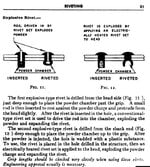Nodeo-Franvier
Airman 1st Class
- 132
- Jul 13, 2020
Wikipedia entry for He 100 have the following
To ease production, the new design had considerably fewer parts than the 112 and those that remained contained fewer compound curves. In comparison, the 112 had 2,885 parts and 26,864 rivets, while the P.1035 was made of 969 unique parts with 11,543 rivets. The new straight-edged wing was a source of much of the savings; after building the first wings, Otto Butter reported that the reduction in complexity and rivet count (along with the Butter brothers' own explosive rivet system) saved an astonishing 1,150 man hours per wing.
I assume that Heinkel was hardly unique in trying to simplify the construction of their fighter,How much did the next generation fighter such as P-51/FW190/P-47/P-38 took this into consideration?
To ease production, the new design had considerably fewer parts than the 112 and those that remained contained fewer compound curves. In comparison, the 112 had 2,885 parts and 26,864 rivets, while the P.1035 was made of 969 unique parts with 11,543 rivets. The new straight-edged wing was a source of much of the savings; after building the first wings, Otto Butter reported that the reduction in complexity and rivet count (along with the Butter brothers' own explosive rivet system) saved an astonishing 1,150 man hours per wing.
I assume that Heinkel was hardly unique in trying to simplify the construction of their fighter,How much did the next generation fighter such as P-51/FW190/P-47/P-38 took this into consideration?
Last edited:

